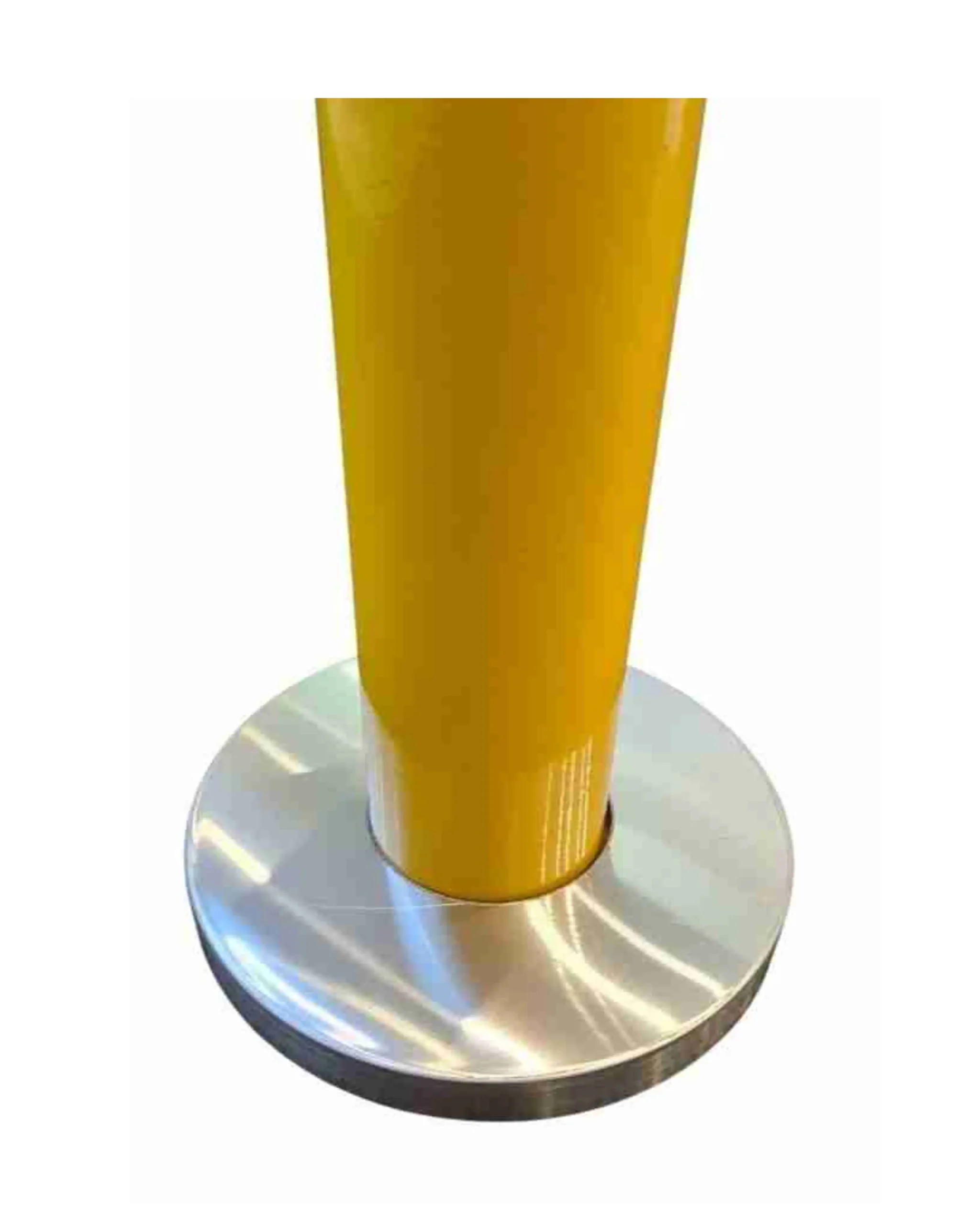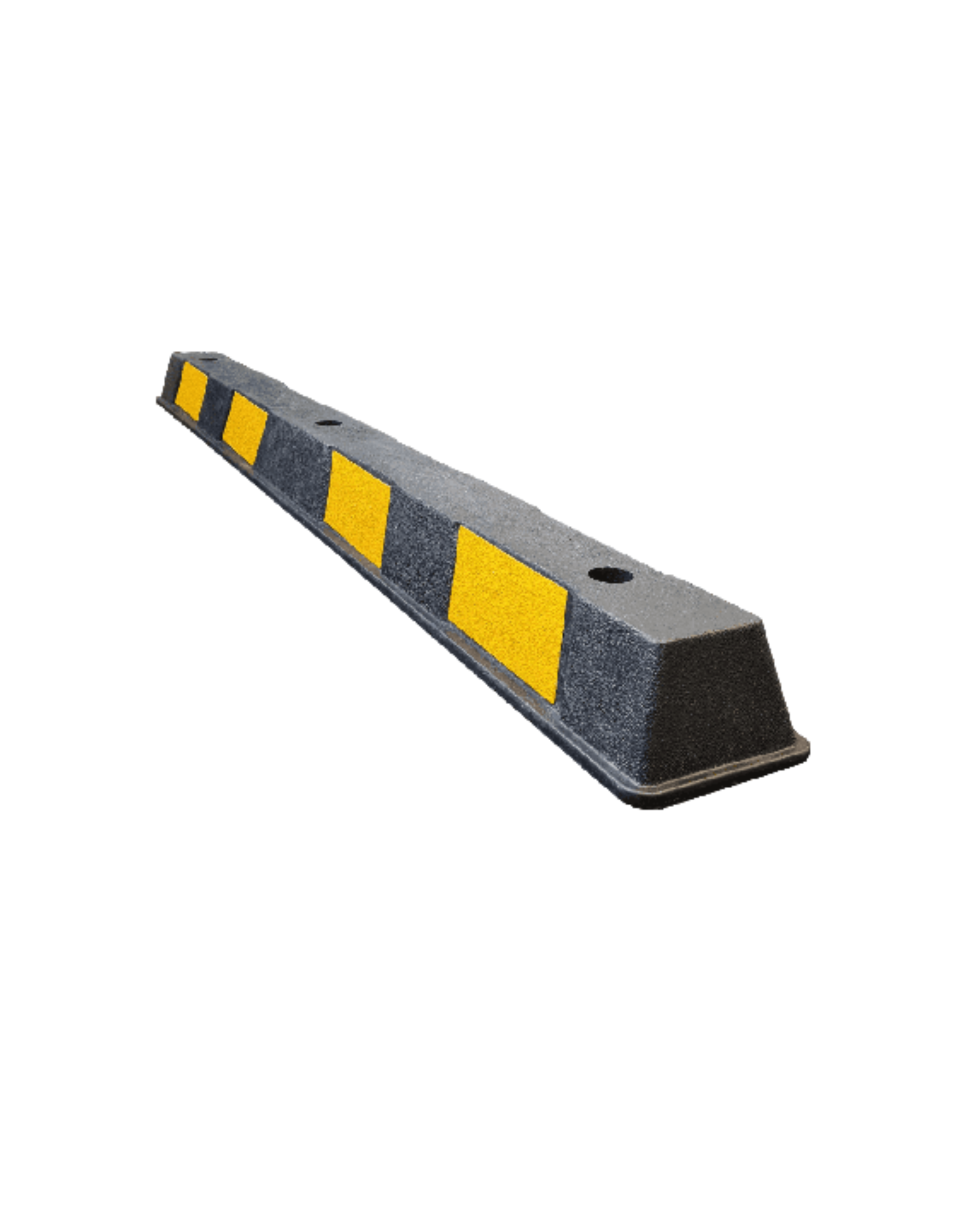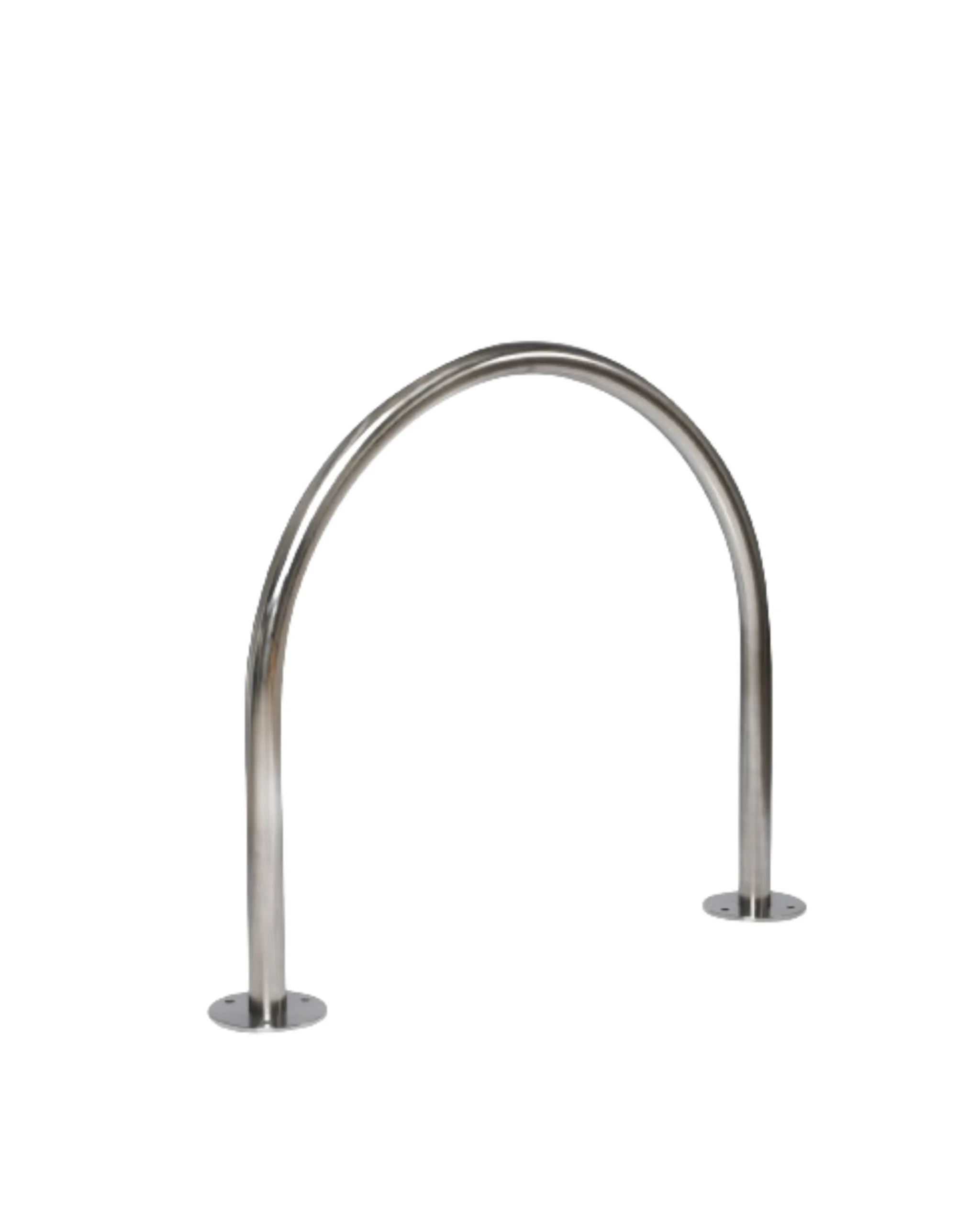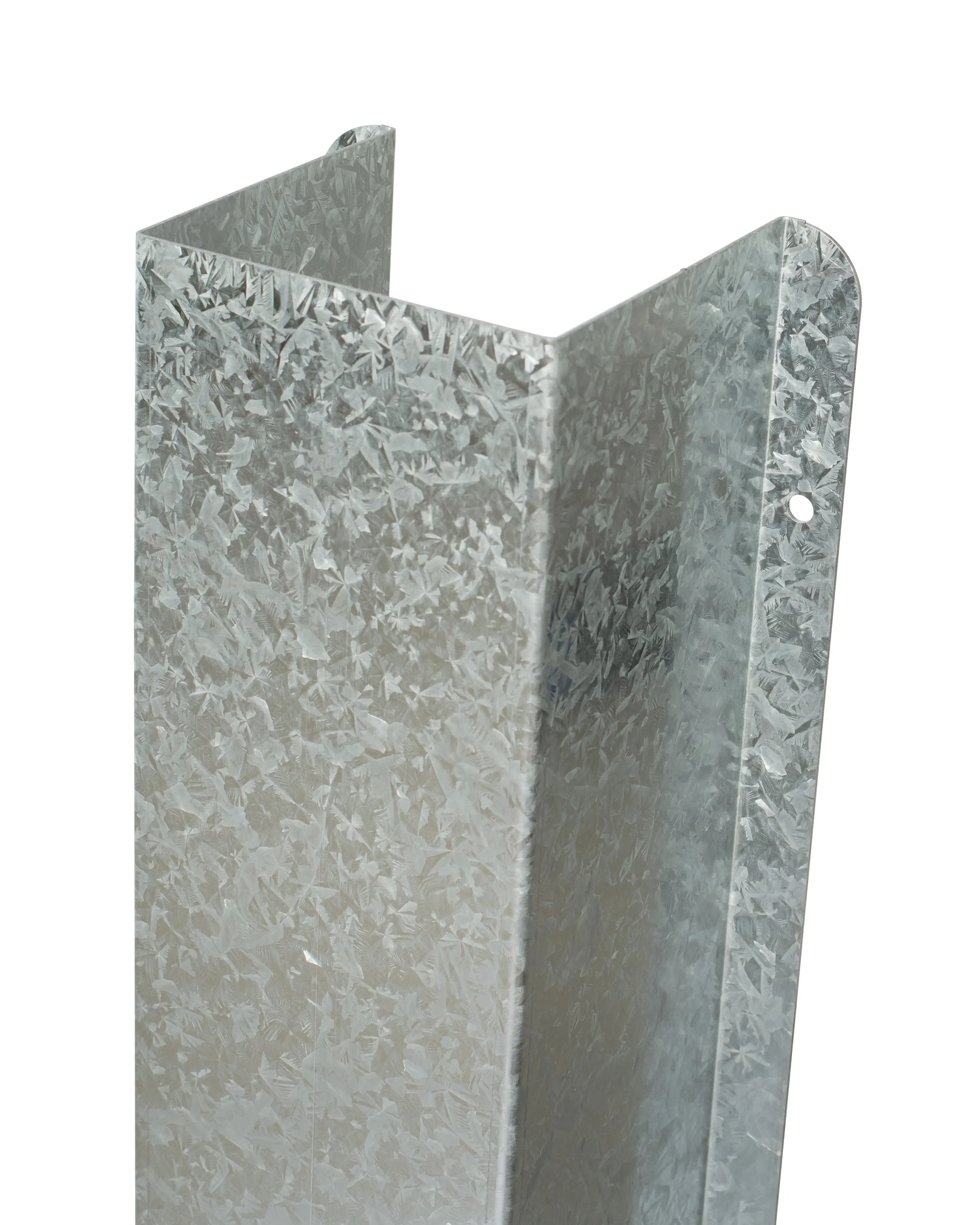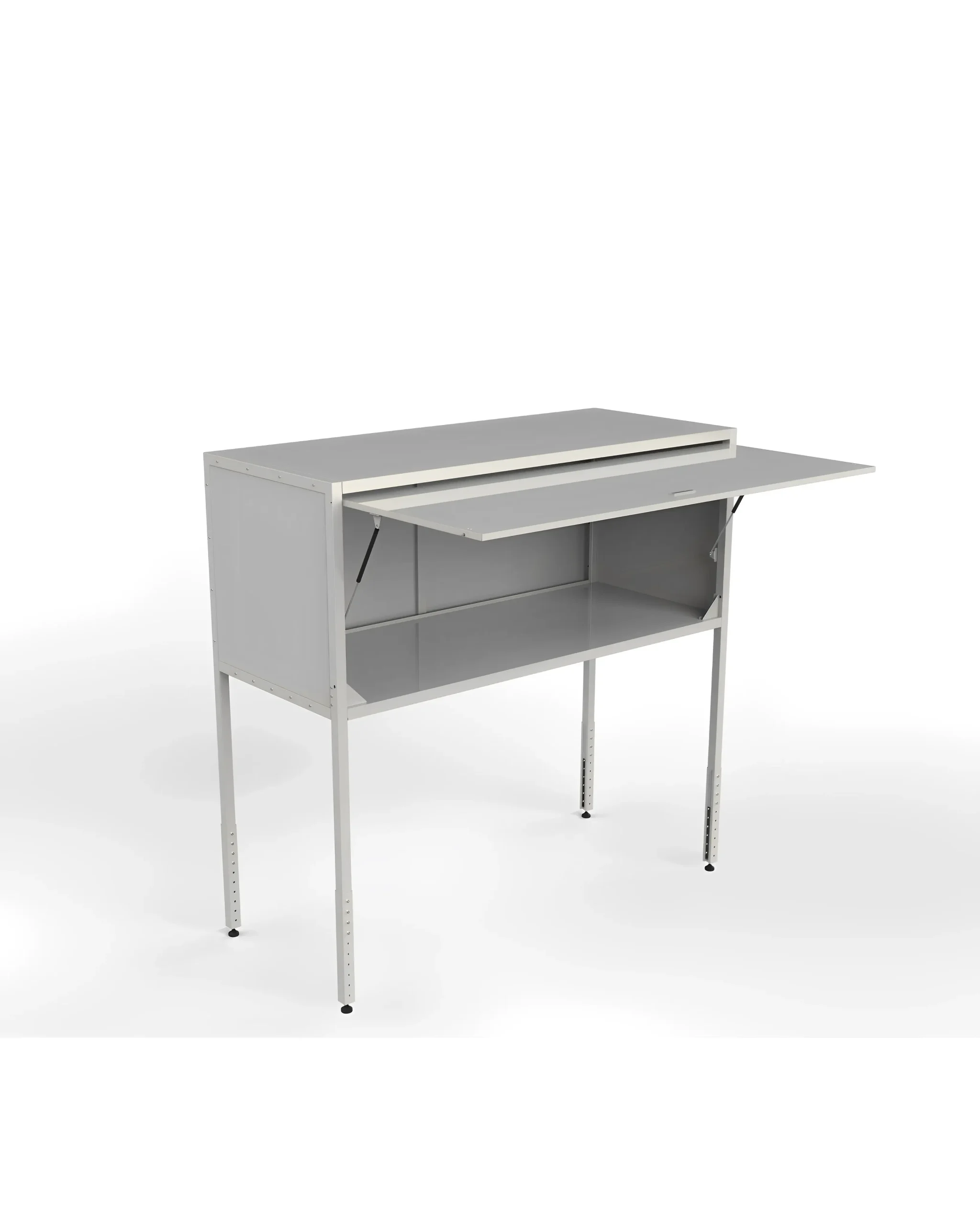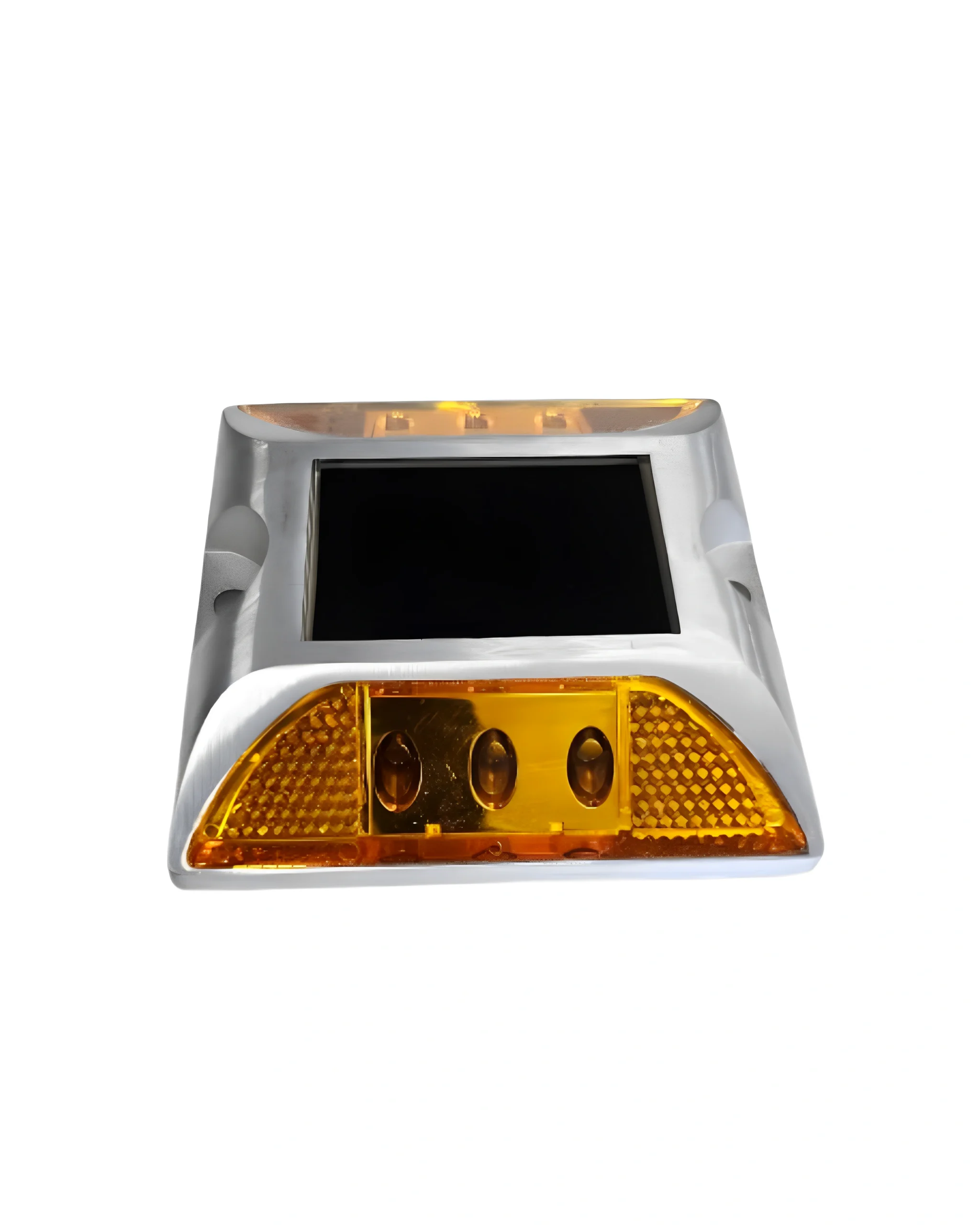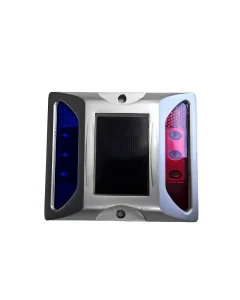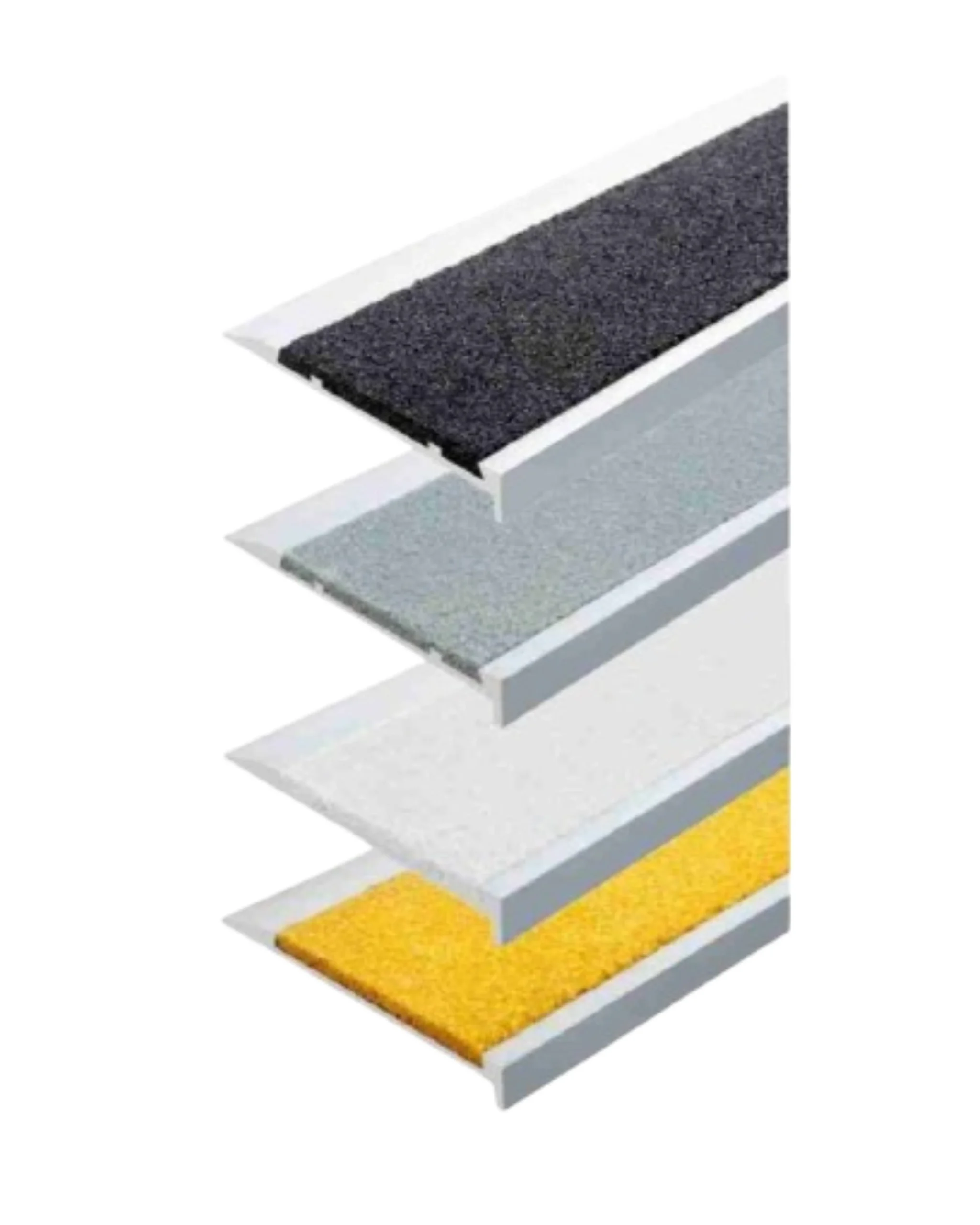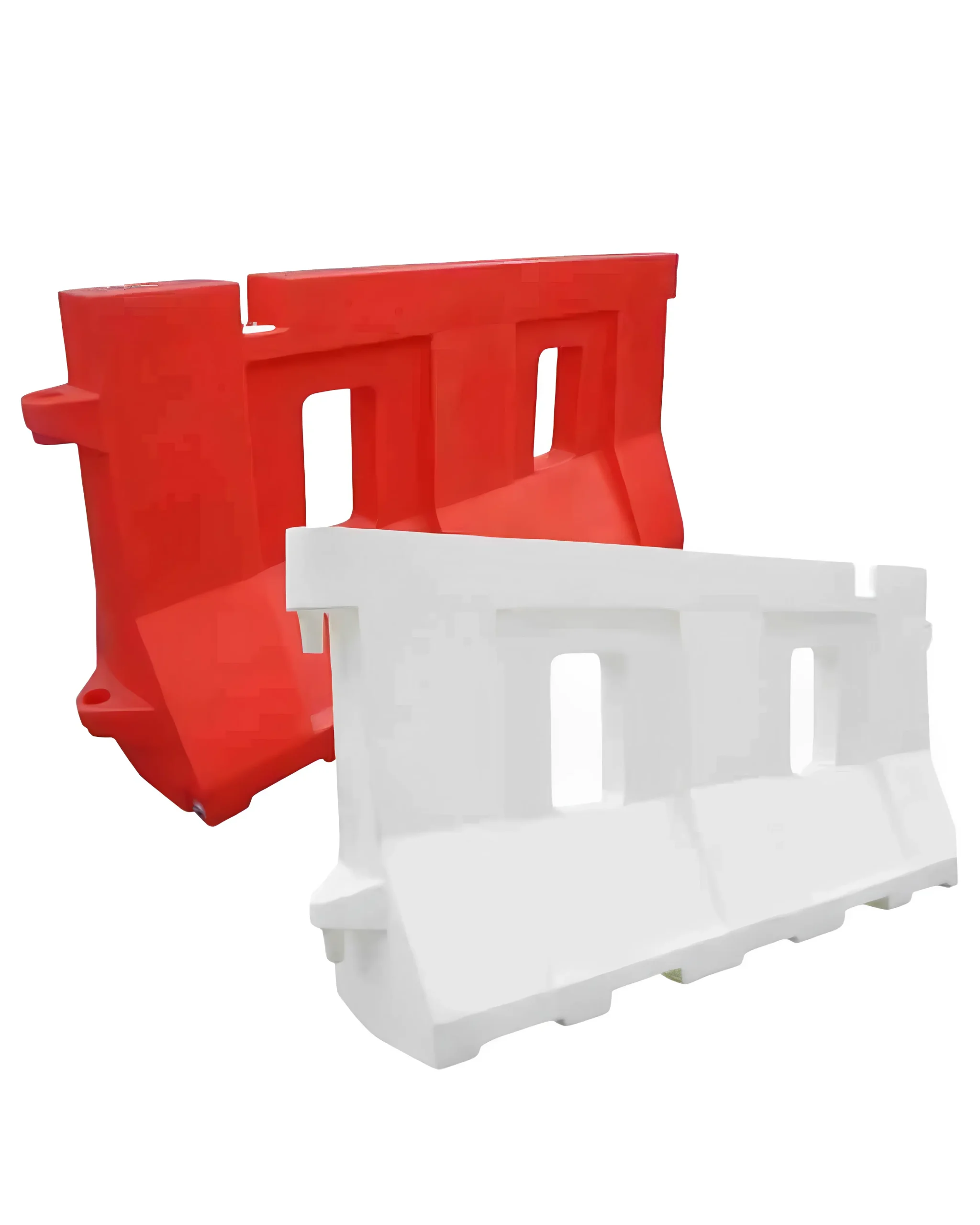A bollard’s sturdy presence and formidable shape are great to keep any unwanted visitors at bay, while providing a safe space for those who belong. Whether they’re used in parking lots or parks, bollards can make all the difference when it comes to security and safety – but only if you know which type will best suit your needs. This comprehensive guide will explore the various types of bollards so that readers can gain mastery over protecting their spaces correctly.
Are you looking for something more decorative? Or do you need extra strength for serious protection? There are countless different options available, each with its own advantages. Let’s take a look at some of them now! From flexible plastic designs to steel-plated models, there’s sure to be one that fits your specifications perfectly. We’ll explain how materials influence the durability and cost of each option as well as the features specific to certain varieties.
No matter what kind of environment you’re safeguarding, this guide has got you covered – giving you all the information necessary to choose the right type of bollard for your needs. So read on and get ready to become an expert in exploring various types of bollards!
What Are Bollards?
Bollards are a popular security solution used to protect people, buildings, and other property. They come in many shapes and sizes, but all serve the same basic purpose of keeping areas secure. There are several types of bollards that can be divided into two main categories: fixed bollards and removable bollards.
Fixed bollards are typically made from steel or concrete and remain permanently in place. These provide maximum protection against vehicle impact since they cannot be easily moved or removed by intruders. Steel bollards offer the additional benefit of being highly customisable with various colors, finishes, designs, and heights available for different applications. Concrete bollards are heavy-duty options for restricting access to hazardous areas such as parking lots or construction sites.
Removable bollards are designed to be installed temporarily when needed and then taken down afterwards. Traffic bollards are an example of this type which allow emergency vehicles easy access without compromising overall perimeter security. Removable models also have the advantage of being less expensive than their fixed counterparts while still providing adequate protection when necessary.
By understanding these different types of bollard systems, businesses can ensure that they select the right option best suited for their needs and situation. Moving on now to discuss fixed bollard systems in more detail…
Fixed Bollard Systems
Sturdy and steadfast, fixed bollards are a staple for many building protection, roadway, parking lot, and pedestrian walkway applications. From stainless steel to automatic models, these immovable posts provide reliable security with minimal upkeep. Here’s what you need to know:
- Automatic Bollards: Automatic bollards can be controlled remotely or set on a timer so they raise and lower automatically according to the time of day or special events. They offer an extra level of safety and convenience.
- Building Protection Bollards: Building protection bollards form barriers around buildings that help protect against vehicular damage from errant drivers. These are usually buried in concrete for added stability.
- Roadway Bollards: Roadway bollards keep pedestrians safe by creating boundaries between traffic areas and sidewalks. They also mark crosswalks while providing additional visibility at night when they’re illuminated or reflective.
- Parking Lot Bollards: Parking lot bollards create paths that help direct traffic flow throughout large lots while keeping vehicles away from parked cars, trees, light poles, etc. Their bright colors make them easy to spot even in low light conditions. Stainless steel construction ensures their longevity through harsh weather conditions year after year.
With such strength and resilience coupled with ease of installation and maintenance requirements, it’s no wonder why fixed bollard systems remain popular among facilities managers looking for dependable perimeter control solutions for any setting! Moving forward we’ll explore removable bollard configurations – designed for frequent use as well as temporary access needs – which serve varying purposes depending on application type.
Removable Bollard Configurations
Now that we have a better understanding of fixed bollard systems, let’s take a look at the various types of removable bollards and their configurations. Removable bollards are typically used in areas where access needs to be controlled without permanent installation. They can easily be removed and replaced as needed, allowing for an adjustable security solution when necessary.
| Bollard Type | Features/Advantages | Disadvantages/Constraints |
|---|---|---|
| Plastic Bollards | Flexible material Easy to install & remove Economical price point | Durability Limited weight-bearing capacity Environmental impact Susceptible to weathering Limited strength |
| Collapsible Bollards | Slim profile Can be hidden away when not in use | Moving parts Maintenance Security concerns Installation complexity Cost |
| Reflective Bollards | Visibility for drivers during nighttime hours Highly visible from long distances | Visibility issues Maintenance Potential for vandalism Aesthetic concerns |
Each type of removable bollard has its own set of features and advantages which make it suitable for different applications. For example, plastic bollards provide a flexible material that is easy to both install and remove while also being fairly economical. However, they may not last as long as metal alternatives under heavy usage. On the other hand, collapsible bollards offer a slim profile so they can easily be tucked away when not in use but require more specialised installation methods and tend to cost more than other types of removable bollards. Reflective bollards meanwhile allow drivers increased visibility during night-time hours but need frequent upkeep since they are susceptible to damages caused by either vehicles or extreme weather conditions.
Ultimately, depending on your specific requirements you will want to carefully consider all the distinct configuration options available with each type of removable bollard before making your decision. With this knowledge in mind, let us now turn our attention towards automated bollard solutions and learn about how these innovative devices work.
Automated Bollards
Automated bollards are an increasingly popular security system, as they provide a high level of protection with minimal effort. They consist of two main components: the motor and the control unit, which can be either manual or automated. Manual systems require someone to manually open and close the bollard, while automated systems allow for remote access via a keypad or other device. Automated bollards offer more flexibility than manual ones since they can be programmed to raise and lower at certain times, allowing you to keep your property secure 24/7.
In addition to providing physical barriers against intruders, these bollards also serve as visual deterrents that help create an atmosphere of safety around your home or business. Many models come in bright colors to further increase their visibility, making them ideal for any situation where improved security is needed. And because they’re easy to install, there’s no need for bulky masonry work – all you have to do is connect the power supply and programming controller!
The great thing about automated bollards is that they’re both reliable and cost-effective. With just a few clicks on your smartphone or computer, you can easily set up the system without breaking the bank. Plus, if anything ever goes wrong with your system, many manufacturers offer customer service support so you don’t have to worry about troubleshooting it yourself. Now we turn our attention towards steel bollards…
Steel Bollards
One would think that steel bollards, with their strength and durability, are the most secure option for protecting against unwanted vehicle access. Little do they know – it’s not as simple as that! Steel bollards have their place in certain applications, but depending on the situation, other materials may be more suitable.
The advantages of steel bollards include:
- Their ability to resist impact from vehicles
- Their malleability which allows them to be customised into various shapes
- The simplicity and cost-effectiveness of installation
However, there are also some drawbacks to using steel bollards; corrosion is a major issue due to its environment exposure. Rust can significantly weaken these structures making them less effective at preventing vehicular intrusion or even providing an aesthetic appeal. This can lead to costly repairs or replacements over time if left unchecked. Furthermore, the weight of steel makes transport and setup relatively difficult and requires additional equipment or personnel during installation.
Despite these downsides, when used correctly in appropriate environments, steel bollards offer reliable protection and security against potential risks posed by unauthorised vehicles. As such, careful consideration should always be taken before deciding what material best fits your needs. With this said however, we must now turn our attention towards concrete bollards – where things get much more interesting….
Concrete Bollards
Moving on from steel bollards, concrete is an equally popular choice for protecting property and pedestrians. It’s a durable material that provides a sturdy barrier against vehicular intrusion. Plus, it can be custom-made to fit whatever area or space you’re looking to secure.
When building with concrete, you’ll want to make sure the mixture is adequately cured before installation. This will ensure maximum strength and protection over time as well as help prevent cracking due to weather conditions or other factors. You’ll also need to consider how much weight your bollard needs to support since some mixtures are better equipped for heavier loads than others.
For added aesthetic appeal, consider adding decorative paint or finishes such as staining or faux brick treatments. Doing this can give your concrete bollards an attractive look while still providing reliable security at the same time. Whether you choose precast concrete models or decide to pour in place yourself, there are plenty of options when it comes to outfitting your site with concrete bollards.
Next up, we’ll explore plastic and polymer bollards—materials that offer their own unique set of advantages depending upon the application.
Plastic And Polymer Bollards
Plastic and polymer bollards are an essential part of the larger building protection systems. These lightweight materials offer a range of benefits, from their low cost to ease of installation and maintenance. They can be designed in virtually any colour or style, making them ideal for creating a visually appealing environment – while also providing security.
These synthetic materials create a sense of strength and durability that is hard to come by with traditional metal bollards. Unlike other types of bollards, they typically require minimal structural support due to their light weight. This makes them perfect for locations where there may not be enough space or resources available for heavy concrete foundations or steel pilings. Plastic and polymer bollard models are often more flexible than their metal counterparts when it comes to height changes as well as design customisations like engraving or signage attachments.
What’s more, plastic and polymer bollards can provide additional safety features such as reflective strips or warnings signs which alert drivers to potential hazards ahead. With these options at hand, businesses can rest assured that visitors will remain safe even if unexpected obstacles arise along the way. Thanks to their versatility, plastic and polymer bollards make it easy to keep your premises secure without sacrificing aesthetics. As we move on into the next section about building protection systems, one thing remains clear: plastic and polymer bollards have become an invaluable tool for keeping people safe around buildings everywhere.
Building Protection Systems
Building protection systems are a critical component of any bollard installation. Bollards can provide physical and visual barriers for the security of both personnel and property. In this section, we’ll explore various types of building protection systems that utilise bollards to enhance safety.
| Type | Benefits | Examples |
|---|---|---|
| Perimeter Security System | Prevents unauthorised entry & enhances surveillance, provides access control & secures boundaries | Barbed wire fence, gates, CCTV cameras etc. |
| Blast Protection System | Resists explosive force & protects from projectiles or flying debris | Anti-ramming walls/fences, reinforced windows & doors |
| Crowd Control Barrier | Secures pedestrian flows in public places | Retractable belt system , collapsible crowd barrier |
The right combination of these building protection solutions is essential for achieving optimal levels of security. Depending on your needs, you may require one type or several different kinds of bollard installations to protect your facility against threats like vandalism and theft. With careful planning and selection of the best available bollard options, you can create an effective defense perimeter for your premises. As we move forward with our comprehensive guide on bollards, let us now turn our attention to another key application: securing roadways with bollards.
Bollards For Roadways
“The old adage ‘an ounce of prevention is worth a pound of cure’ rings true for roadway bollards. Bollards are an essential component in preventing vehicles from entering or leaving unauthorised areas, and they can be used to protect pedestrians as well. From decorative accents that add flair to standard safety elements, here are five popular types of roadway bollards:
- Traffic-Delineation Bollards: These thin metal pipes act as visual cues to show drivers the line between roads and sidewalks.
- Removable/Retractable Bollards: For busy intersections and driveways, these bollards can help create space when needed while maintaining security at other times.
- Crash-Rated Bollards: Made with high-grade steel or concrete, crash-rated bollard systems can resist extreme impacts from even the largest vehicles.
- Decorative Bollards: Ornamental designs like cast iron posts bring style to any setting without sacrificing strength or visibility.
- Lighted Bollards: Illuminated models offer extra visibility for nighttime roadways or parking lots.
Bollard installations along roads promote safety for both pedestrians and motorists alike by creating barriers between them. They also serve as deterrents against illegal activities such as theft and vandalism near businesses, schools, government facilities, and more. To ensure maximum protection from vehicle intrusion, using multiple layers of different types of bollards–such as removable ones combined with traffic delineators–can provide an additional layer of security.” With this comprehensive guide on various uses for bollards out of the way, next we’ll examine some unique solutions available specifically tailored towards parking lot safety requirements.
Parking Lot Safety Solutions
When it comes to ensuring the safety of a parking lot, bollards are invaluable. By creating physical barriers and obstacles, they can help prevent vehicles from entering restricted areas or damaging property. In this section we will explore various types of parking lot safety solutions using bollards, including their benefits and drawbacks.
| Type | Benefits | Drawbacks |
|---|---|---|
| Removable Bollards | Easy installation; cost-effective; customisable options available such as signage and lighting fixtures Can be removed for special events or when necessary for emergency access | Require regular maintenance (if used often) due to wear and tear on the ground surface around them; may require more frequent replacement if exposed to extreme weather conditions on a regular basis |
Each type of parking lot safety solution has its own advantages and disadvantages depending on your particular situation. Depending on what you need, fixed or removable bollards might work best for providing general protection while heavier weighted traffic control devices can provide an extra layer of security in higher risk areas. Ultimately, selecting the right bollard system depends on how much effort you want to put into maintaining it while keeping up with changing needs. As such, careful consideration should be taken before any purchase is made so that you select the most suitable solution for your facility’s individual requirements.
The next section will discuss another important component of roadway safety: traffic control devices. From speed bumps to roundabouts, these tools help regulate flow and improve overall driving experience – something worth exploring further.
Traffic Control Devices
Bollards are versatile traffic control devices that can be used to manage the flow of pedestrians and vehicles. They come in various shapes, sizes, and materials such as steel, concrete, and plastic. Bollards help ensure the safety of pedestrians by providing a physical barrier between them and any oncoming traffic. They also create an effective visual deterrent for vehicles while helping direct people to designated pathways or spaces.
In addition to being functional traffic control devices, bollards can also enhance the overall aesthetic of an area with their attractive designs. There is a wide variety of decorative options available that include lights and even graphics which further highlight features like walkways and crosswalks. Furthermore, they provide additional protection from potential hazards like collisions due to low visibility areas or hazardous driving conditions.
For those looking for maximum security solutions stainless steel bollards offer superior strength compared to other types of bollard material choices. Stainless steel bollards have been proven time again to be capable of withstanding impact from heavy objects at high speeds making them ideal for commercial settings where access must be strictly regulated or restricted altogether. With this in mind it’s easy to see why many businesses choose stainless steel bollards when seeking out effective security solutions. And with so many styles and configurations available there’s sure to be one perfect for most any application imaginable! Moving forward, let’s explore these stainless steel security solutions in more detail…
Stainless Steel Security Solutions
When it comes to traffic control and safety, stainless steel bollards are an ideal solution. These sturdy posts come in a variety of sizes and styles, offering the perfect blend of style and security for any setting. Whether you need something to protect pedestrians from vehicles or simply want to add some visual interest to your landscape, there’s sure to be a bollard that meets your needs.
Stainless steel is one of the most durable materials available and makes for excellent bollards due to its strength and corrosion resistance. This means that they can withstand even extreme weather conditions without fading or rusting over time. Plus, they look great! Stainless steel bollards have a sleek modern appearance that adds an attractive touch to any outdoor space while providing maximum protection against potential hazards.
There’s no denying the value of having reliable security solutions, especially when it comes to controlling access around commercial properties or public spaces. Installing stainless steel bollards ensures that all areas remain safe and secure while also creating a visually appealing environment at the same time. With their stylish design, these bollards provide both form and function — giving you peace of mind knowing that everything is well-protected from danger. Now let’s move on to discuss the advantages of collapsible security systems…
Collapsible Security Systems
Collapsible security systems provide a number of advantages for those looking to secure their premises. These bollards are designed to be easily retracted, allowing vehicles and pedestrians to pass quickly and safely when needed. They can also offer an additional layer of protection with retractable spikes that deploy during high-security events or periods.
One advantage of collapsible bollards is the ability to control access more precisely than other types of permanent bollards; these structures can be deployed in mere seconds, offering instant protection from unauthorised vehicles or personnel. Additionally, they are often relatively easy to install compared to some other types of bollard solutions and require minimal maintenance over time.
While there may not yet be as many applications for collapsible security systems as there are for conventional fixed bollard installations, this type of system provides a unique solution for certain needs where flexibility and ease-of-use are key priorities. Moving forward, it’s likely that we will see increasing use cases where collapsible security systems prove invaluable in providing both safety and convenience. This transition into the next section about reflective safety measures allows you to explore how visual cues can help increase awareness and reduce incidents onsite.
Reflective Safety Measures
The night sky is illuminated by the stars, which guide lost travellers home. In a similar way, reflective safety measures are designed to protect people and property by providing an extra layer of visibility in low-light settings. Reflective bollards can be used to increase visibility around hazardous areas or slow down traffic on busy roads. They also provide a warning to pedestrians that they may be at risk from vehicles entering their vicinity.
Reflective bollards come in various shapes and sizes, including round posts with either smooth or ridged surfaces for increased grip when touched in darkness. Many of these models feature additional reflectors such as stripes or bands along the length of the post for added illumination. These types of bollards are often made from high-quality materials like stainless steel and aluminum, ensuring a long lifespan even under heavy use. Additionally, many manufacturers offer customisation options for specific needs so you can choose the most suitable solution for your particular situation.
Fortunately, installing reflective bollards does not require any special skills or tools; most setups involve simply drilling holes into the ground and bolting them securely into place with appropriate fasteners according to instructions provided by the manufacturer. With this type of installation process, it’s possible to keep personnel safe while still keeping costs reasonable – making reflective bollard systems a great choice for businesses who value both security and budget considerations alike. Moving forward, exploring installation processes associated with different types of bollards will help us complete our comprehensive guide to understanding them better.
Installation Processes
Installing bollards can be a tricky process, but with the right tools and preparation it doesn’t have to be. Depending on what type of bollard you’re installing, there are different installation methods that should be followed for optimal results.
Surface-mounted bollards are typically installed using anchors or bolts into an existing surface such as concrete or asphalt. These types of bollards require pre-drilling and should always be sealed against water damage. It is also important to make sure that the base material is strong enough to support the weight of the bollard itself.
For in-ground installations, a hole will need to be dug first before any other steps can take place. The size of this hole will depend on the type and size of bollard being installed. Afterward, a bituminous emulsion sealant may then be poured around the edges of the opening to ensure waterproofing while backfill may then follow with gravel or sand depending on personal preference. Finally, tamp down all materials so they form tightly around each side of the post ensuring stability and security in its placement.
In order to achieve maximum effectiveness from your chosen protection solution, careful attention must paid throughout every step in the installation process – starting from preparing the site all the way through final positioning and stabilisation efforts. When done correctly, you’ll enjoy long lasting use out of your new purchase!

















